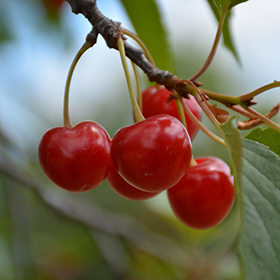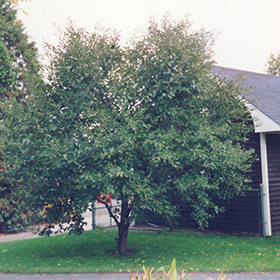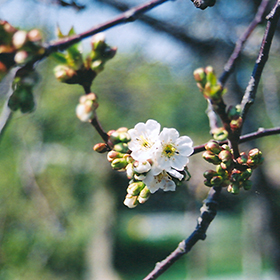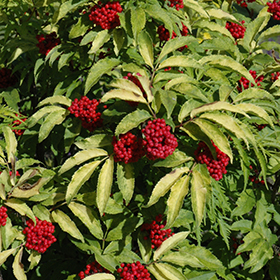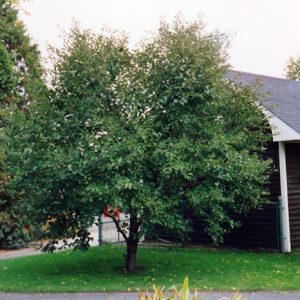Description
Growth & Care
| USDA Plant Hardiness Zone | 4a |
| Growth Rate | Average |
| Recommended Pruning Method | Late Winter Pruning |
| Fruit Tree Pollinator Requirement | Self-pollinated |
Foliage
| Foliage Type | Deciduous |
| Fall Color | Orange |
| Plant Form | Oval |
Flowers
| Flower Period | Spring |
| Flower Color | White |
| Flower Fragrance | High |
Additional Categories
| Additional Category | Cherry |
| Landscape Application | Accent, Orchard |
Details
Planting & Growing
Montmorency Cherry will grow to be about 20 feet tall at maturity, with a spread of 15 feet. It has a low canopy with a typical clearance of 3 feet from the ground, and is suitable for planting under power lines. It grows at a medium rate, and under ideal conditions can be expected to live for approximately 30 years. This is a self-pollinating variety, so it doesn't require a second plant nearby to set fruit.
This tree is typically grown in a designated area of the yard because of its mature size and spread. It should only be grown in full sunlight. It does best in average to evenly moist conditions, but will not tolerate standing water. It is not particular as to soil type or pH. It is highly tolerant of urban pollution and will even thrive in inner city environments. This particular variety is an interspecific hybrid.
Features & Attributes
Montmorency Cherry is clothed in stunning clusters of fragrant white flowers along the branches in mid spring before the leaves. It has dark green deciduous foliage. The pointy leaves turn an outstanding orange in the fall. The fruits are showy cherry red drupes carried in abundance in mid summer. The fruit can be messy if allowed to drop on the lawn or walkways, and may require occasional clean-up. The smooth dark red bark adds an interesting dimension to the landscape.
This is a deciduous tree with a shapely oval form. Its average texture blends into the landscape, but can be balanced by one or two finer or coarser trees or shrubs for an effective composition. This plant will require occasional maintenance and upkeep, and is best pruned in late winter once the threat of extreme cold has passed. It is a good choice for attracting birds to your yard. It has no significant negative characteristics.
Aside from its primary use as an edible, Montmorency Cherry is sutiable for the following landscape applications:
Accent, Orchard/Edible Landscaping
Edible Qualities
Montmorency Cherry is a small tree that is typically grown for its edible qualities. It produces cherry red round fruit (technically 'drupes') with yellow flesh which are usually ready for picking in mid summer. Note that the fruits have hard inedible pits inside which must be removed before eating or processing. The fruits have a sour taste and a firm texture.
The fruit are most often used in the following ways:
Cooking, Baking, Preserves, Juice-Making
